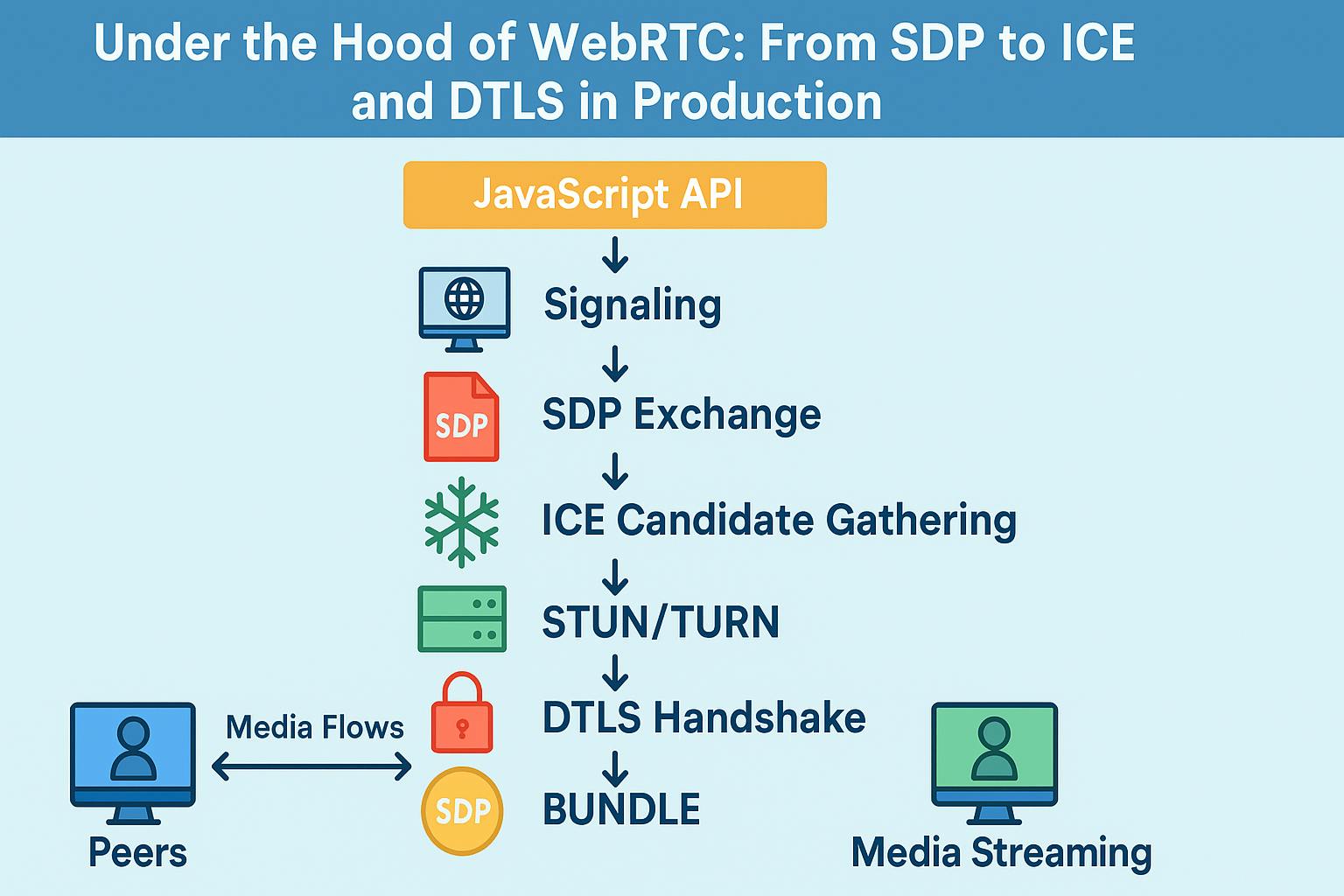
"WebRTC allows real-time communication with audio, video, and data in browsers without plugins, utilizing a combination of JavaScript APIs and native engines for connectivity."
"The signaling process in WebRTC lacks a standard definition, requiring implementations to provide their own channels for sharing key information such as session control, network configuration, and media capabilities."
"An SDP offer includes the audio and video codecs, formats, and network info, while ICE candidates help peers find the best network paths for stable connections."
"After user media is captured, Alice creates an offer through RTCPeerConnection, sends it to Bob, who responds with his own SDP offer, establishing the foundation for their media session."
WebRTC enables direct real-time communication through browsers, combining JavaScript APIs and native engines. A WebRTC connection involves two peers exchanging signaling messages that include SDP offers/answers and ICE candidates. The signaling allows for session control commands, network configuration details, and media capabilities. Alice initiates a call to Bob by creating an RTCPeerConnection, acquiring local media, and producing an SDP offer. Bob receives this offer and applies it to set up the remote description, facilitating the connection process while establishing required network paths and security protocols.
Read at Hackernoon
Unable to calculate read time
Collection
[
|
...
]